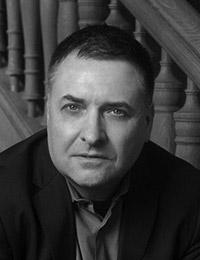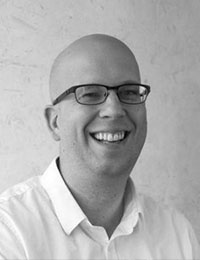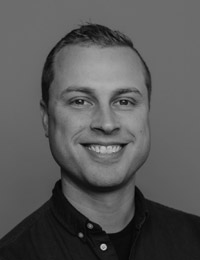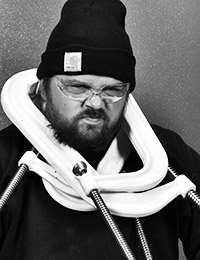
Structured as a public platform for the dissemination of knowledge produced within contemporary design practice, the Project 2022 Symposium will bring together a number of recent UNL College of Architecture Master of Architecture graduates who are leveraging design research within their professional work. While examining the various research methodologies and specific applications of design research being investigated by these graduates, the symposium will also serve as an opportunity to consider more broadly how the insights gained through design research—whether those created within the UNL Architecture Program design thesis and design-research studio programs or within the professional practice—might be better documented, disseminated and ultimately utilized across a broader community.
SCHEDULE
Date: February 9, 2023
Time: 6:00 - 8:00pm
Place: Omaha By Design
Event is free and open to the public.
AGENDA
Item |
Time |
| Introduction - Jeffrey L. Day - College of Architecture | 6:00 pm |
| Presentation 1 - Nate Miller - Proving Ground | 6:15 pm |
| Presentation 2 - Zach Soflin - Layer | 6:30 pm |
| Presentation 3 - Kate Hier - Clark & Enersen | 6:45 pm |
| Presentation 4 - Dale Luebbert - Polynomial | 7:00 pm |
| Panel Discussion |
7:20 pm |
| Closing Comments | 7:50 pm |
PANELISTS:

Jeffrey L. Day, FAIA, NCARB is Douglas Professor of Architecture and founding principal of Actual Architecture Company (formerly Min | Day) in Omaha. A graduate of Harvard College and U.C. Berkeley, Day runs FACT, an interdisciplinary designbuild studio engaging creative nonprofits and communities in collaborations that span design and construction. Day has garnered numerous honors including Architect Magazine’s Progressive Architecture Award, the Architectural League of New York’s Emerging Voices, Architectural Record’s Design Vanguard, AIA California Council’s Emerging Talent award, New Practices San Francisco, Residential Architect’s Rising Star, numerous ACSA awards and over 100 design awards.

Nate Miller, is the founder of Proving Ground - a digital transformation agency. Miller specializes in collaborating with designers and builders to implement digital strategies for reducing waste, enhancing creativity and making better decisions about the built environment. In addition to developing new software, Miller frequently publishes writings about digital business practices, critical evaluation of technology trends and ethical considerations influencing the adoption of new technology in the construction industry.
Abstract: In 2007, Miller completed his UNL Master of Architecture design thesis which explored observable trends in urban decay in parallel with emerging technology. The work depicted diagrams, collages and renderings of faceless silhouettes dwelling within machine-controlled adaptive environments ‘run amok’ against a backdrop of Amazon delivery trucks and dead shopping malls. Miller’s panelist remarks will reflect on his UNL thesis work in the context of today’s technology trends and opportunities for creating meaningful digital transformations within the fields of design and construction.

Zach Soflin, AIA, a 2012 Master of Architecture alum, is the founder and CEO of Layer, a work management platform for buildings. Prior to founding Layer, Soflin was a Project Architect at BVH Architecture for eight years. He also teaches parametric modeling at the College of Architecture.
Abstract: Soflin will explore how having the freedom to research during his 6th year had a profound ripple effect on who he is today. Specifically, how his design thesis, “Data-Driven Architecture,” solidified his interest in how contextual data can drive architecture. He’ll discuss how this experience informed his career as an architect, leading him to create a custom solution to problems he encountered on various projects, including the Nebraska State Capitol. He’ll also share how the prototype he developed, that linked field data back to the digital design model, led to the creation of Layer App, the seed-funded startup that he founded in 2019.

Kate Hier, AIA, NCARB, EDAC WELL AP a 2012 Master of Architecture alum, is a principal and architect at Clark & Enersen. She is passionate about inspiring others through the design of beautiful spaces, and crafting architecture to be a tool for discovery, connection, learning and healing. As a leader of the firm’s science and technology market sector, she specializes in the design of higher education and science & technology facilities and has led design on numerous high-profile projects at universities, research parks and medical education centers across the nation. Her focus lies at the intersection of process, visioning for the future and design excellence.
Abstract: The patterns of human movement define a myriad of cause and affect relationships in the world around us. Human movement correlates with discovery, disease spread, invention, economics, time use efficiency, knowledge retention, security, innovation, neural networks and numerous other measurable and immeasurable phenomena. If human movement can be observed and harnessed, how might the impacts of it be harnessed as well? This presentation will discuss the research of human movement and how it may be applied in architecture that focuses on education, scientific research, healthcare and new technologies.
Dale Luebbert, a 2009 Master of Architecture alum and founder of Polynomial, pursued a typical architecture career. While practicing, he watched the world become increasingly custom-made, yet the design and construction community remained shockingly cookie-cutter. The same old fabricator-distributor relationships, the same old markups, the same old roadblocks to implementing custom components of projects.
So, in 2014 Luebbert started Polynomial with the goal of shifting the dialogue surrounding architectural fabrication in Omaha and beyond from what isn’t possible to what is. The team has built a reputation for solving challenging problems and producing the highest quality work around.
Abstract: While a student, Luebbert sought out opportunities to learn from various types of physical making including four years of design-build internships as well as Jeffrey L. Day’s FACT studio. This experience provided him with a false sense of immediacy from design to fabrication not present in typical architectural practice. After graduation, he quickly realized that as an architectural designer, he had a limited role in the actual making. He could detail most projects but translating that to the end product proved unnecessarily difficult especially when it came to custom elements.
By understanding that this disconnect created a barrier to better work happening in Omaha, Luebbert decided to combine his unique skills and seek a method where design and fabrication communicated more closely.
Follow the College of Architecture
